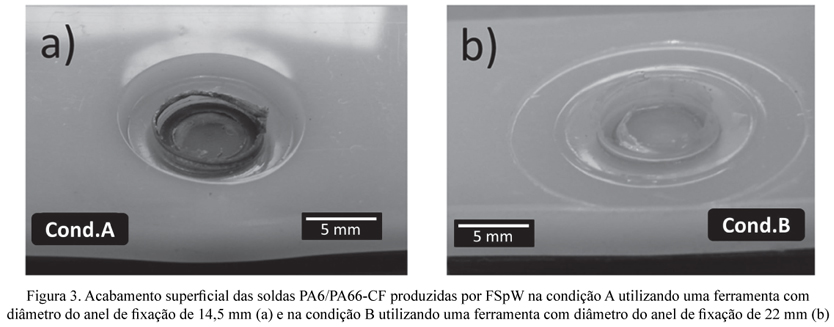Friction Spot Welding is an innovative technique developed and patented in 2005 by the research center Helmholtz Zentrum Geesthacht (HZG). Advantages of the process include fast joining cycles, low operational costs and good mechanical performance. It was originally developed to weld lightweight metals and has been continuously improved to weld polymers. There are only few studies on friction spot welding of thermoplastics and the welding of polymeric composites by FSpW is still unpublished. This study demonstrated the technical feasibility of welding a polyamide 6 (PA6) plate over a carbon fiber polyamide 66 laminate (CF-PA66) by FSpW. The thermal history, the surface finish, the microstructure of the weld region and the mechanical shear strength of PA6/CF-PA66 lap joints were investigated. The increase of the diameter of the clamping ring - originally designed for welding lightweight metals - led to the selection of welding parameters that result in high heat input, resulting in an increased welded area, and lower notch left by the tool in the sample that improved the surface finish of the weld. This optimization resulted in a PA6/CF-PA66 joint with lap shear strength of 35 MPa (2196 N), with fracture occurring mainly in the top plate of PA6.
Friction Spot Welding; FSpW; Polyamide; Polyamide 6.6/carbon fiber laminate; Composites















